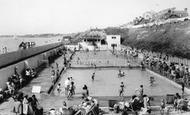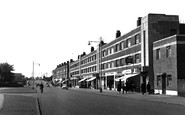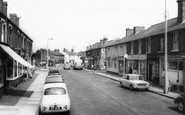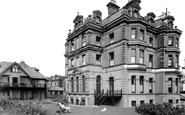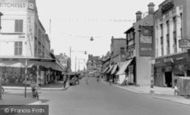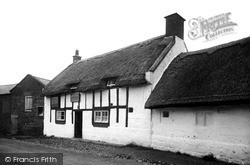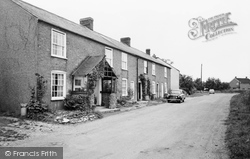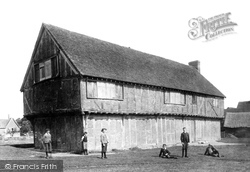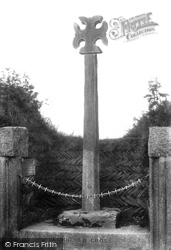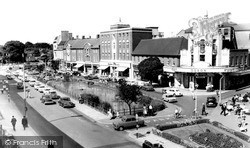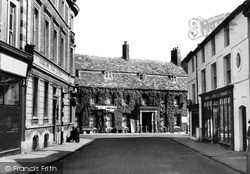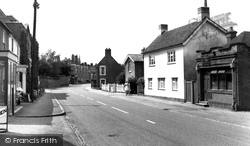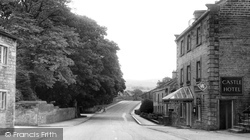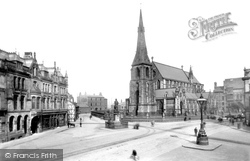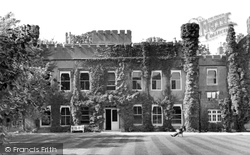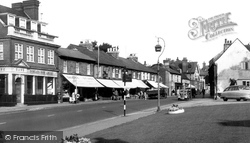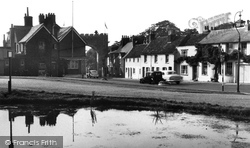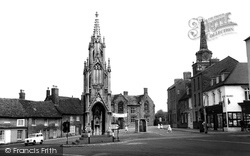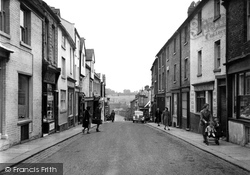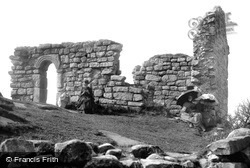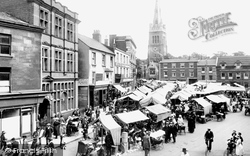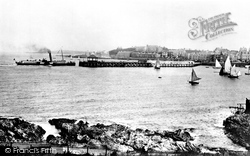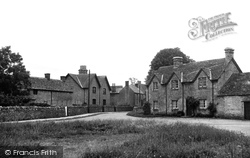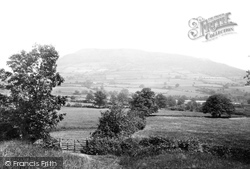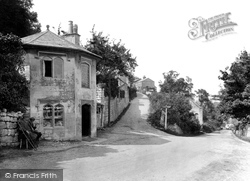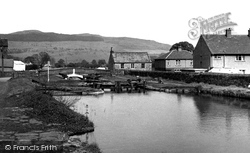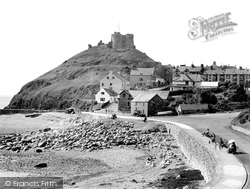Places
5 places found.
Those places high-lighted have photos. All locations may have maps, books and memories.
Photos
48 photos found. Showing results 201 to 48.
Maps
74 maps found.
Books
1 books found. Showing results 241 to 1.
Memories
381 memories found. Showing results 101 to 110.
Lee Pool
Although I used to take my two children to the pool from Stubbington when we lived there in the 1960s my memory is of the 1940s when it was an adult pool with a high diving board. A swimming gala was put on by the Navy and we sat on ...Read more
A memory of Lee in 1965 by
Grandparents House
My grandparents and family, including my father, used to live in Kelvin Grove. My dad, Joseph Gamble, married my mum Margaret Govern and moved around the corner to James Watt Avenue where I was born. I think your grandparents, the ...Read more
A memory of Corby by
The Thirties
My grandmother, widowed, lived during the 20s and 30s at 1, High Street (next to The Dolphin), and was glad of family visits to assist in her invalid-style of life. That usually meant our family, and my mother took a number of ...Read more
A memory of Middleton Stoney in 1930 by
The Place Where I Was Born
I was born in Whalley, in the second cottage opposite the Catholic Church in the Sands, in December 1924. Next door to us was Mr Sutton who was well known around Whalley for his ice cream. He used to stand outside the abbey ...Read more
A memory of Whalley in 1920 by
Where I Once Lived As A Young Boy
Lovely to find a photo of the road in which I lived as a young boy. I lived at the Fruit and Vegetable shop (owned by my Uncle Norman Evans) which stood on the corner of Cobden Street and Bridgnorth Road. It ...Read more
A memory of Wollaston by
The Buildings
This is actually a photo of the Garden Hotel, which stood in Sandgate Road. It was empty from about 2000, had a fire in about 2005 and was demolished soon after. But it was quite prestigious in its day: such as the 1960s, when this photo is said to have been taken.
A memory of Folkestone by
Mrs Kilshaw
I remember the creaky stairs and stodgy atmosphere of Central Preparatory so well, even though it's now 44 years since I last heard the sterling tones of Mrs Kilshaw resounding through the classroom. Miss Backhouse was my personal ...Read more
A memory of Accrington in 1962 by
Caravan Holiday With Mum
We stayed in a small caravan on Ridings Farm, owned then by Mr & Mrs Rand. We travelled by coach from Gosport, Hampshire. Catherine Hackett, my mother,adopted me when I was less than a year old, she was widowed and ...Read more
A memory of France Lynch in 1954 by
Scole Stores
My parents Bernard (better known as Syd) and Margret (Peggy) Blunsom owned Scole stores in the main street of Scole. I rember the house well across the road was pretty"s garage. Old Mrs Johnsons cottage was sandwiched between us and the ...Read more
A memory of Scole in 1957 by
Erith And Belvedere
I lived in Upper Belvedere from the time I was born until I married 1n 1954. I used to catch the 99 bus from the Eardly Arms pub, on a Saturday morning. to the Ritz cinema in the high street Erith. There was no Odeon then. The only ...Read more
A memory of Erith in 1930 by
Captions
288 captions found. Showing results 241 to 264.
This lovely thatched, half-timbered inn has stood on this site, alongside the connecting road from Birkenhead to Neston, since 1611.
In front of one of these houses stood the community's well. This was cemented over in the 1950s. It was 175 feet deep, and was notorious for breaking its rope and losing the bucket.
Bunyan's home in the village stood on the west side of the northern end of Elstow High Street, but was demolished in the 1960s.
The cross base already stood at Badash, and Mr Coode financed the making of a new lower shaft and lower base so that the whole cross could be erected on 27 June 1902 to commemorate the coronation of Edward
The spacious northern end of the High Street, with its central water garden and carefully tended flowerbeds, marks the area where the market hall stood until 1853.
Looking East from Wood Street An inn has stood on this site for 400 years.
If you compare this photograph with the reality of the scene today, it would seem at first glance as if time has stood still here.
The railway station, demolished in 1968, stood on the old drove road leading to the fells we can just see in the background.
The church of St Mary, which stood here in c1773, was demolished except for its tower and spire, and then rebuilt.
The largest house in Ewell, opposite the old churchyard, this castellated building was built by Henry Kitchen between 1810 and 1814 to replace an earlier castle which stood here in the reign of King Charles
The old vicarage once stood on the site of the war memorial.
On the right, close to the tail of the sleek American Plymouth car, is a small green on which stood the village pump.
If you compare this photograph with the reality of the scene today, it would seem at first glance as if time has stood still here.
This arch was floodlit at night, and stood from June until October, when the materials were then re-utilised in the building of a Scout hut in nearby Little Bushey Lane.
It has now been relocated to the spot where the photographer stood.
This street was the original London to Holyhead turnpike, and along it stood twelve hostelries providing for the passing trade of up to 80 coaches a day.
It dates from Saxon times, the 8th century, and one of the reasons it had stood so long in such an exposed spot is the mortar.
It was built of stone from the Session House, which had stood in the market until 1805. Paynes the bakers were in the pale upright building with advertisements for wedding cakes on the frontage.
To increase the attraction of a pier to the casual pedestrian, a band stand stood at the seaward end.
Behind the spot where the photographer must have stood is Windrush Valley School, founded in 1951, and the low building on the extreme right of the picture, next to the three-gabled house
In medieval times a chapel dedicated to St Michael stood on the 1595ft summit of Skirrid Fawr, Holy Mountain.
On the board above the toll house door are listed the charges for the passage of vehicles and animals through the gate that once stood here.
A cotton mill stood here until 1932, and a sawmill was also driven by water power.
In 1326 the garrison stood at ten men; their main defensive weapon was the crossbow. It fired a heavy, hard-hitting bolt that could penetrate armour at ranges up to 250 yds.
Places (5)
Photos (48)
Memories (381)
Books (1)
Maps (74)



